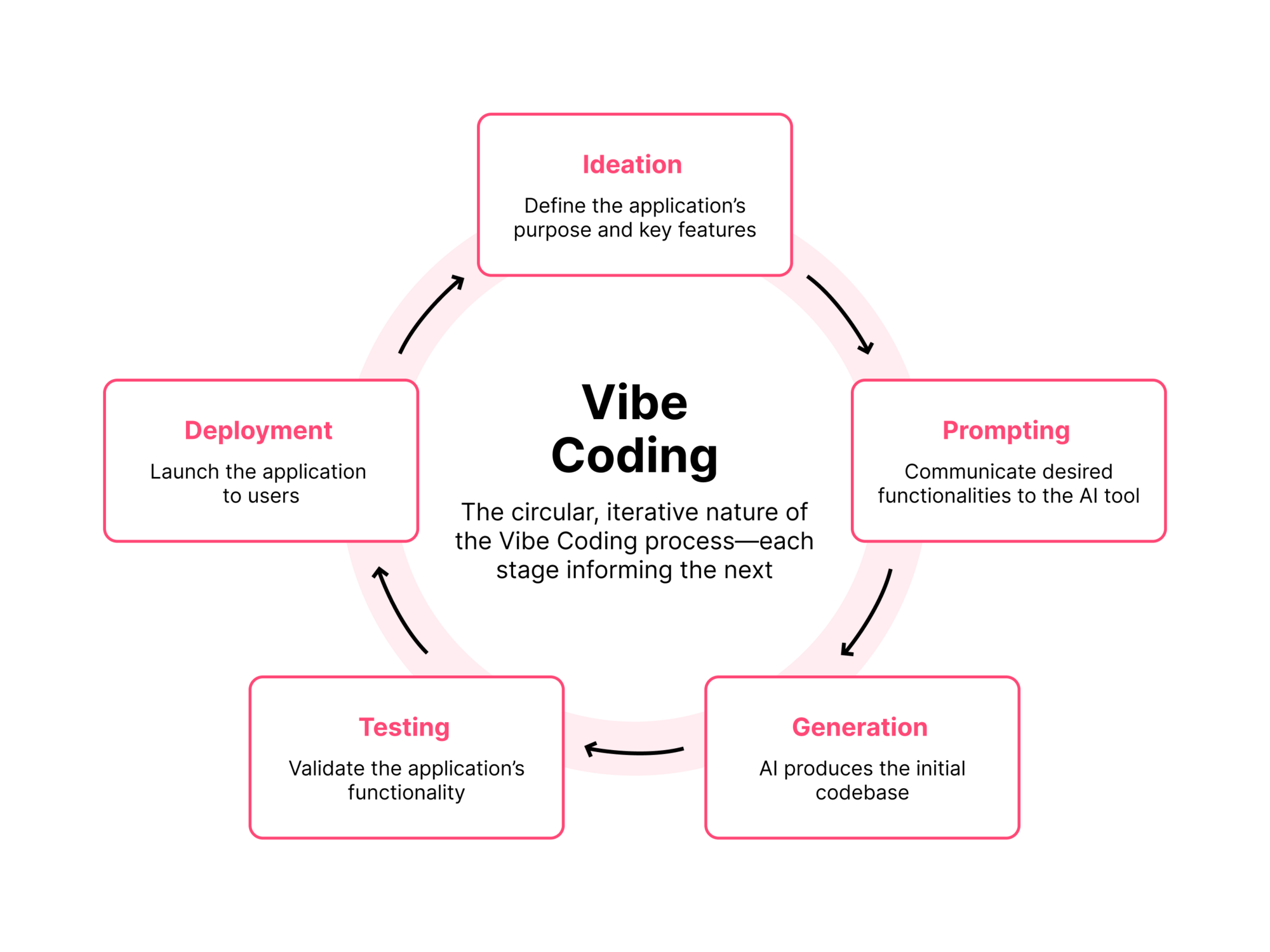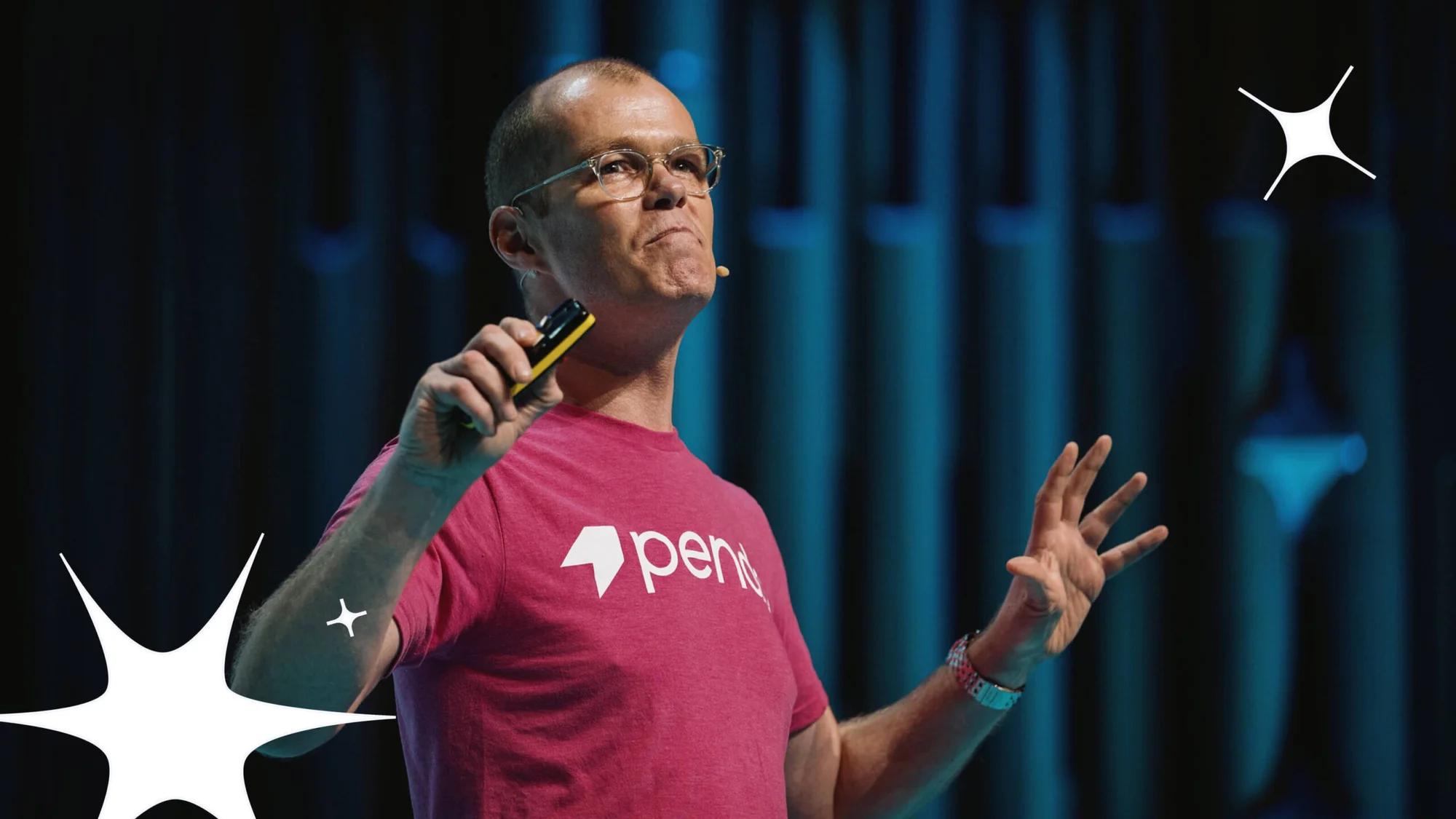Table des matières
Qu'est-ce que le « vibe coding » ?
Le « vibe coding » est une approche de développement logiciel guidée par l'IA dans laquelle les développeurs décrivent les fonctionnalités souhaitées à l'aide d'instructions en langage naturel. De grands modèles de langage (LLM) tels que ChatGPT ou Claude génèrent ensuite le code correspondant, reléguant ainsi le développeur à un rôle de supervision et d'affinage des résultats générés par l'IA, qui n'implique plus de programmation manuelle. Inventé par Andrej Karpathy en 2025, le « vibe coding » privilégie l'intuition et la créativité plutôt que la syntaxe et la structure traditionnelles.
Quelle est l'origine et qu'elle a été l'évolution du « vibe coding » ?
Le terme « vibe coding » est apparu au sein de la communauté de l'IA, mettant en évidence une évolution vers des pratiques de codage plus intuitives. Grâce aux progrès réalisés dans le domaine des grands modèles de langage, les développeurs ont commencé à exploiter l'IA pour gérer les tâches de codage répétitives, ce qui leur permettait de se concentrer sur les aspects plus complexes de la conception et de la résolution des problèmes. Cette évolution a démocratisé le développement logiciel en offrant à des personnes sans formation en programmation la possibilité de créer des applications fonctionnelles.
Comment fonctionne le « vibe coding » ?
Dans le cadre du « vibe coding », les développeurs interagissent avec des outils d'IA dans un workflow dynamique et collaboratif qui exploite à la fois la saisie en langage naturel et la génération itérative de code. Les étapes typiques de ce processus sont les suivantes.
- Describing features: Developers begin by articulating the application’s goals or specific features in plain language prompts. This step often resembles product ideation sessions, where user needs and business objectives are outlined.
- Prompt engineering: Fine-tuning the phrasing and specificity of prompts plays a crucial role in achieving high-quality results. Developers experiment with different instructions, formats, and levels of detail to guide the AI effectively.
- Code generation: Based on the prompts, the AI generates code—ranging from simple functions to complex UI components. Developers review this output for correctness, efficiency, and alignment with the intended functionality.
- Iterative refinement: This phase involves continuously updating prompts, tweaking code manually when necessary, and re-engaging the AI to improve the solution. It is common to cycle through several rounds of back-and-forth before reaching the desired outcome.
- Testing and validation: Developers perform unit tests, integration tests, and manual validation to ensure the generated code works as intended and doesn’t introduce regressions or security flaws.
- Deployment: Once validated, the feature is merged into the main codebase and deployed. Continuous monitoring tools like Pendo are often used post-deployment to analyze usage and performance.
Cette méthodologie crée une belle synergie entre l'intuition humaine et l'efficacité de l'IA, ce qui permet aux développeurs de se concentrer davantage sur l'architecture, la facilité d'utilisation et l'impact métier plutôt que sur la syntaxe et le boilerplate.
Quels sont les avantages et les inconvénients du « vibe coding » ?
Avantages :
- Accelerated development: Rapid prototyping and iteration allow SaaS teams to move from idea to implementation much faster than traditional development. For example, a product manager can describe a feature—like a custom onboarding flow for enterprise users—and have a functioning prototype within hours, not days.
- Accessibility: Vibe coding lowers the barrier to entry for non-developers, enabling designers, product managers, and even customer success professionals to contribute to product development. Imagine a CS team member generating a basic reporting dashboard for user engagement metrics using AI, which a developer can then polish and integrate.
- Focus on creativity: By offloading routine and repetitive tasks to AI, developers can focus on what truly matters—innovative problem solving and UX. For instance, rather than manually coding every modal or button state, engineers can spend their time crafting a unique, seamless workflow for B2B trial conversions.
Inconvénients :
- Potential for errors: AI-generated code may contain bugs, inefficient logic, or unintended behavior. For example, in a SaaS billing module, an AI might incorrectly apply tax logic across international regions, leading to compliance issues. Manual review and QA testing remain essential to ensure production-ready code.
- Security concerns: Without thorough review, AI-generated code can expose security vulnerabilities—such as open API endpoints or improper data validation. Imagine a scenario where a vibe-coded feature allows unrestricted file uploads without size limits or content checks—this can quickly become a vector for abuse.
- Over-reliance on AI: Depending too heavily on AI tools may diminish hands-on coding skills over time. For instance, a junior developer might struggle to debug or scale a user management feature built by AI if they never fully understood how it was constructed. To mitigate this, teams should ensure regular upskilling and code walkthroughs.
Quelle est l'incidence du « vibe coding » sur le développement SaaS ?
Le « vibe coding » est particulièrement avantageux dans le développement SaaS, où la rapidité et l'adaptabilité sont déterminantes. En tirant parti de l'IA, les équipes peuvent rapidement créer des prototypes de fonctionnalités, tester les interactions avec les utilisateurs et procéder à des itérations en fonction des retours. Cette approche favorise les méthodologies agiles et les modèles de livraison continue qui sont courants dans les environnements SaaS.
En quoi consiste le processus du « vibe coding » ?
- Idéation : définir l'objectif et les principales fonctionnalités de l'application
- Création des instructions : communiquer les fonctionnalités souhaitées à l'outil d'IA
- Génération : l'IA produit le codebase initial
- Révision : évaluer et peaufiner le code pour en optimiser les performances et la sécurité
- Test : valider les fonctionnalités de l'application
- Déploiement : mettre l'application à la disposition des utilisateurs
Quelles sont les bonnes pratiques à suivre en matière de « vibe coding » ?
- Communication claire : fournir des instructions précises et détaillées à l'IA
- Apprentissage continu : se tenir au courant des capacités et des limites des outils d'IA
- Tests approfondis : mettre en place des protocoles de test rigoureux pour garantir la fiabilité
- Audits de sécurité : passer régulièrement en revue le code à la recherche d'éventuelles vulnérabilités
Comment Pendo améliore-t-il le « vibe coding » ?
L'intégration de Pendo dans le workflow du « vibe coding » offre une couche de visibilité, de validation et d'itération supplémentaire, transformant les fonctionnalités générées par l'IA en expériences véritablement centrées sur l'utilisateur. Pendo améliore ainsi chaque étape du processus du « vibe coding ».
- User insights: Through detailed behavioral analytics, Pendo helps teams understand how users engage with newly generated features. For example, if a vibe-coded onboarding sequence has a high drop-off rate, product teams can pinpoint where users disengage and adjust accordingly.
- Feedback collection: In-app polls and surveys allow real-time input from users, giving developers the ability to iterate quickly. A product manager could launch a new AI-generated dashboard and instantly gather feedback on which metrics users find most useful or confusing.
- Usage analytics: Pendo tracks adoption and feature usage across segments, highlighting what’s working and what’s not. Imagine a scenario where a customer success team vibe-codes a new help widget—Pendo can reveal which users engage with it and whether it reduces support tickets.
- In-app guidance: AI-generated features may require some onboarding themselves. With Pendo, teams can build contextual walkthroughs or tooltips that help users adopt and understand new workflows without developer intervention.
En tirant parti des outils performants d'analyse produit et de collecte des retours de Pendo, les équipes SaaS peuvent boucler la boucle entre la génération de code et la validation par les utilisateurs, garantissant ainsi que chaque fonctionnalité générée à l'aide de l'IA est conçue dans un but précis, perfectionnée en fonction du comportement réel des utilisateurs et mise à disposition aussi rapidement que le permet le « vibe coding ».
Le « vibe coding » représente une approche transformatrice du développement logiciel qui allie la créativité humaine à l'efficacité de l'IA. Bien qu'il offre de nombreux avantages, il est essentiel de l'aborder avec discernement, en veillant à ce que les applications soient performantes, sécurisées et centrées sur l'utilisateur. Des outils tels que Pendo jouent un rôle essentiel pour combler le fossé entre le code généré par l'IA et les besoins réels des utilisateurs, faisant du « vibe coding » une stratégie viable pour le développement SaaS moderne.






